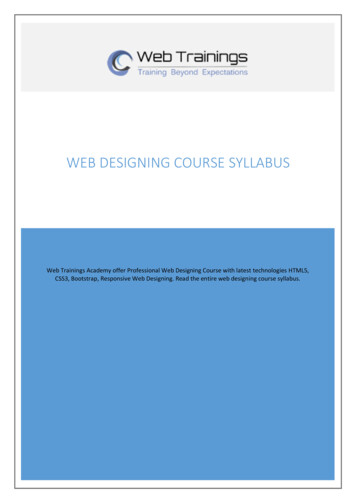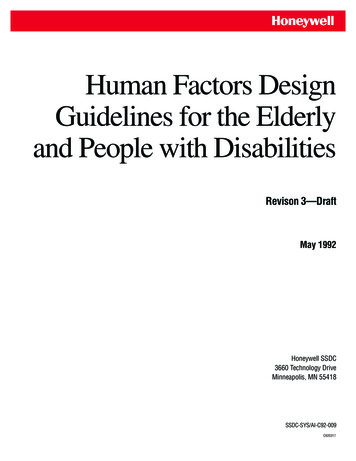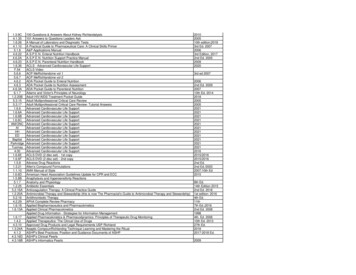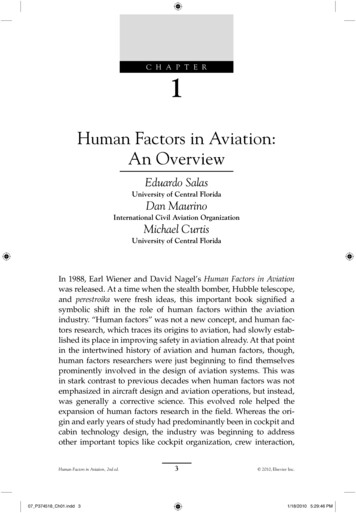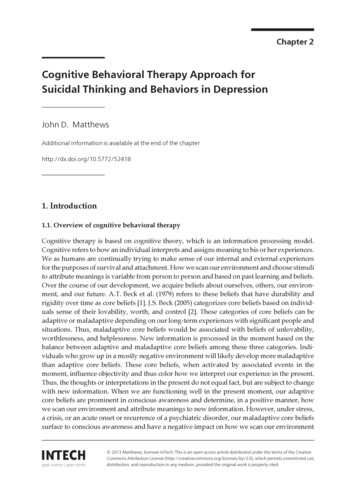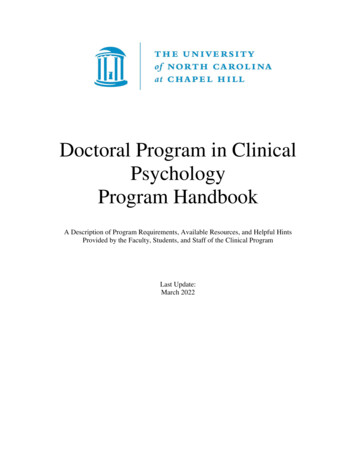
Transcription
Important Factors inDesigning Clinical TrialsMary L Hardy, MDUCLACedars-Sinai Integrative MedicineProgram
To Do List for Research Project Define your research question Assess adequacy of current information Choose appropriate clinical design Select outcomes Consider new technologies to conducttrials Avoid common mistakes Getting value for money
Defining Research Question Be specific about what you want toknow Challenging to test dietary supplementclaims Efficacy vs. effectiveness Evaluating harm- more difficult Exception to this rule: obtaining safetydata
Do you know enough to proceed? Why review the literature? Characterization of your test product Adequate safety data Traditional knowledge Animal data & pre-clinical Human data Bioavailability & Pharmacology Fasting vs. non-fasting Formulation Dosing schedule
Do you know enough to proceed? Dose ranging study Range from 1/2 expected dose to double expecteddose Outcome tools What has been used before? Do validated methods exist? Can we use these same methods? Feasibility of design? Can this project actually be run and completed Can you ever skip all this?
RCT: Is that all there is ? When is an RCT NOT appropriate? Value of a chain of evidence (CS) What constitutes the appropriate controlgroup for a clinical trial? Active vs placebo control How many patients to enroll Consideration of different trial designs:case series, cohort, n of 1, etc.
Choosing Outcomes Wisely Answer the research question Choose evaluation interval wisely Use patient centered outcomes Use validated instruments where possible Primary vs secondary endpoints: pro’s &con’s Blind assessors to the group assignment forcontrolled trials Opportunity to collect safety data Less is more: only collect what you need
Avoiding Common Mistakes Not enough preliminary data to conduct thetrial Not performing a reasonable effect sizecalculation (enroll too few or too manysubjects) Too many outcomes Not using an appropriate outcome Failing to consider dropouts in study design Performing the wrong analysis on the data
New Technologies Using the web to your advantage Advertising trials Preliminary screening Collecting patient based data Conducting complete trial Characterization of test materials Changes in design
Summary &Questions
Choosing Outcomes Wisely Answer the research question Choose evaluation interval wisely Use patient centered outcomes Use validated instruments where possible Primary vs secondary endpoints: pro's & con's Blind assessors to the group assignment for controlled trials Opportunity to collect safety data Less is more: only collect what you need



